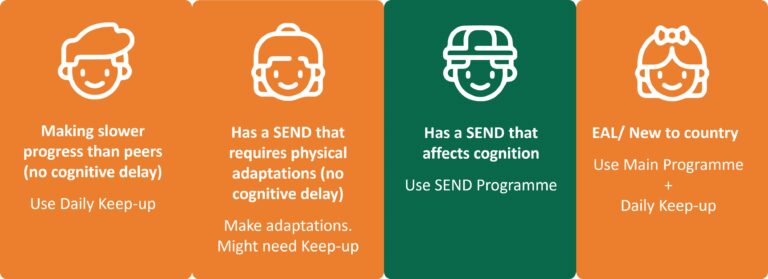You’d be right in thinking that the Cultural Olympiad would include many works by Britain’s most famous poets, writers and playwrights. Performances of plays, readings of extracts of famous books and recital of great poetry have all marked the Olympiad. In this series of activities you will introduce the children to some of Britain’s best loved poetry, the world’s most enjoyed stories and help them to use recognised plots in creating great stories of their own.
Activity One – Poetry Recital
LO: Be able to confidently recite a piece of poetry to an audience using expression, pace and dynamics
Be able to learn a piece of poetry or prose off by heart
Reciting poetry develops speaking and listening skills, confidence and an understanding of poetry and prose. Children get too few chances to express themselves through performance these days with the crush of the curriculum but spending some time working on poetry recital is very worthwhile across the curriculum as it gives children the confidence to speak out and offer opinions.
Children are mainly exposed to modern and often humorous poetry but have little experience of more serious or classic poetry until they reach KS3. Begin by reading a poem to the children that is in a style and on a subject that may be unfamiliar to them. Suggestions include Christina Rossetti’s ‘A Birthday’ William Blake’s ‘The Tyger’ or for something a little different, Benjamin Zephaniah’s ‘Talking Turkeys. You could also choose pieces from the LAMDA syllabus.
You can of course choose your own poems but try to aim for ones that express ideas from other cultures or countries.
Begin by reading it in a normal voice avoiding emphasis and dynamics. Ask the children what they thought of the poem. Now read it with feelings, expression and dynamics and ask the children what they think now.
Write a simple phrase or sentence on the board, for example ‘No, I won’t go’
Talking Point: Discuss the different ways the sentence or phrase could be said.
Under what circumstances might we say the words in each of those styles?
Now choose one of the ways the children have suggested the words could be said, for example, in a whisper. Suggest to them that if this was a line in a poem, what lines might come before it and after it. You should find that they’ll suggest lines that indicate a secret or a desire not to be heard, for example…
Will you go with me?
‘No I won’t go’
I’m too scared
Ask the children to use the way they suggested ‘No I won’t go.’ might be said and to write the line before and the line after.
Talking Point: Ask the children to read out their work using the style they suggested. Ask the rest of the class if they think it worked with the additional lines.
The next step is to get children to practise a piece of poetry or prose for recital. You can do it formally by entering the children into the London Academy for Music and Dramatic Arts (LAMDA) Speaking and Listening Exams or more informally, choose poems or prose from their syllabus and do it yourself in school. The document also gives guidance as to what the performer needs to do to recite it perfectly.
It’s good to give the children an audience so try to arrange an assembly when they can perform their pieces to the whole school.
At Home: It’s important for the children to practise their pieces and setting practice for homework means they get to perform it to family where they are likely to be more confident.
Activity Two – Using Plots in Different Settings
LO: Be able to identify the plot within a story
Use a recognised plot as a scaffold for rewriting the story in a different setting
Many of us will have been to performances of plays or operas, or seen them on TV where the original setting has been changed giving a freshness to the play or opera. One of the favourites of Hollywood is to use the plots from Shakespeare and place them in a modern setting.
For this activity, unless you’ve been studying a Shakespeare play in detail, you’ll need to start simply. Choose a play from the BBC Animated Shakespeare series and watch it with the children.
Talking Point: Ask the children to tell you what the plot of the story was. You may have to explain the word plot to younger or less able pupils.
Map out the plot on the board avoiding using specifics that tie it to the original setting and ask the children to think about how that plot could be transposed into say, the school playground, or a soap opera.
Write the story as a class on the board as a precursor to the children writing their own. Read out the class story and check with the children that they think the plot is the same.
Now choose a different play from the animated series and after identifying the plot, ask the children to write their own story using the plot.
At Home: Shakespeare’s plays had characters of different shades. Give the children a list of the ‘dramatis personae’ from the plays they’ve watched and ask them to sort them into good or bad characters. Many of his characters were influencers or influenced by others. Ask the more able children to decide which of these labels they would place the characters under.
Activity Three – Shakespeare’s Sonnets
LO: Identify and translate unfamiliar language in classic poetry using contextual clues
Be able to identify the metre of sonnets and use it to maintain the style in work of their own
Shakespeare’s sonnets are some of the earliest forms of poetry that children will come across in school. They are quite hard to access but they provide a useful tool for decoding language and understanding the meaning of words and phrases.
Choose one of the better known sonnets such as…
Shall I compare thee to a summer’s day
Thou art more lovely and more temperate
Rough winds do shake the darling buds of May
And summer’s lease hath all too short a date
Sometimes too hot the eye of heaven shines
And oft’ is his gold complexion dimm’d
And every fair from fair sometimes declines
By chance or nature’s changing course untrimm’d
But thy eternal summer shall not fade
Or lose possession of that fair thou ownest
Nor shall death brag thou wanderest in his shade
When in eternal lines to time thou growest
So long as men can breathe or eyes can see
So long lives this and this gives life to thee
Read the sonnet to the children and ask them who they think it’s from and to.
Go through the poem and explain the meaning of thou, thy and thee.
Now ask the children for their ideas on the meanings of some of the more difficult words which are underlined. Encourage them to use contextual clues to help their suggestions.
Can they spot the use of metaphors in the sonnet?
Finally, give them a copy of the sonnet, double spaced, so they can try to turn it into modern language. Some of the less able may need help and it can be useful here to use learning partners.
At Home: You’ll find that the translation will make the sonnet a little clumsy. As an extension activity or for homework, ask the children to rewrite their translation to make it flow better.


